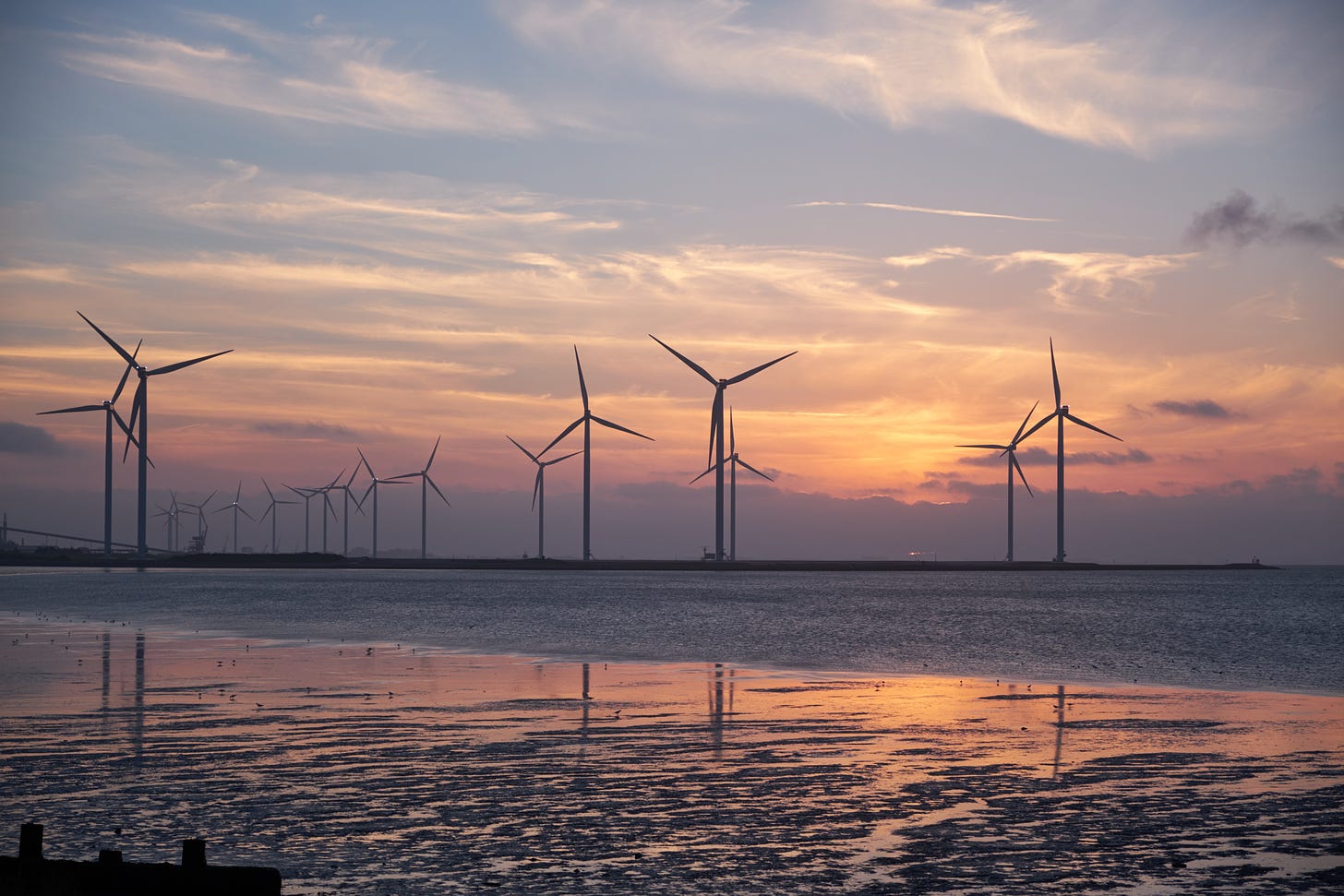Biden Administration Announces Substantial Offshore Wind Plans
Projects totaling 30 GW of new offshore wind by 2030 mark first big push into clean energy
In wonderful news, a statement released today from the White House, in conjunction with various Secretaries, details projects to increase US offshore wind capacity by 30 gigawatts (GW) by 2030. For context, the US currently has close to 30 GW of offshore wind currently installed, so this plan alone would constitute a doubling of American offshore wind.
The White House fact sheet summarizes some of the strongest effects of the proposal:
Meeting this target will trigger more than $12 billion per year in capital investment in projects on both U.S. coasts, create tens of thousands of good-paying, union jobs, with more than 44,000 workers employed in offshore wind by 2030 and nearly 33,000 additional jobs in communities supported by offshore wind activity. It will also generate enough power to meet the demand of more than 10 million American homes for a year, and avoid 78 million metric tons of CO2 emissions. [emphasis mine]
In the above, the CO2 emissions avoidance is likely the yearly number, so that many emissions will be avoided each year with this extra capacity installed. For a sense of scale, that reduction is equivalent to the CO2 emissions of almost 17 million cars per year.1
If you’re a “long time” patron of this newsletter, you may remember that my first substantial piece was on offshore wind news in South Korea and Denmark. For a refresher, those projects were 8.2 GW and 12 GW, respectively, in magnitude. The US’ plan coming in at 30 GW reflects the greater energy needs and current carbon emissions of our expansive nation. Though, contextualizing to other, similarly expansive states, the EU as a whole has the goal of 300 GW of offshore wind by 2050 and China, according to some estimates, is expected “…to exceed 50 GW [of offshore wind] by 2030.”
Now, energy demands, consumption, and current situations are obviously extremely varied between all of these countries and groups. For example, the per capita energy consumption in China is near one quarter to one third that of the US. China’s national interests may include net increases in total energy produced whereas the US is more likely to focus on energy source transition without any significant total increases. With all that said, some idea of where other global players stand on offshore wind can help us get a more in-focus view of where the US stands with its newly announced projects.
Previous actions by the Biden Administration, like rejoining the Paris Agreement, have served as a kind of verbal reaffirmation to the rest of the world that the US is back at the table when it comes to actively fighting climate change. However, this set of projects represents actual action being taken to join the fight and prove to the world the seriousness of the US’ commitments. So states Secretary of Energy Jennifer Granholm: “this offshore wind goal is proof of our commitment to using American ingenuity and might to invest in our nation, advance our own energy security, and combat the climate crisis.”
The project also comes before the unveiling of the administration’s infrastructure plan, expected to be revealed on Wednesday, which will include much of the rest of Biden’s plans to combat climate change. A core focus of these future plans and of the titular offshore wind projects are jobs and the economy. President Biden has repeatedly reiterated a desire to strengthen American (union) jobs, infrastructure, and manufacturing.
Later in the week, we will see a more complete version of the current administration’s plans for infrastructure, investment, and climate action. While this announcement is a refreshing piece of news given the dead air waves of the last four years, more robust judgement and elation (or despair) will have to wait for Wednesday.



